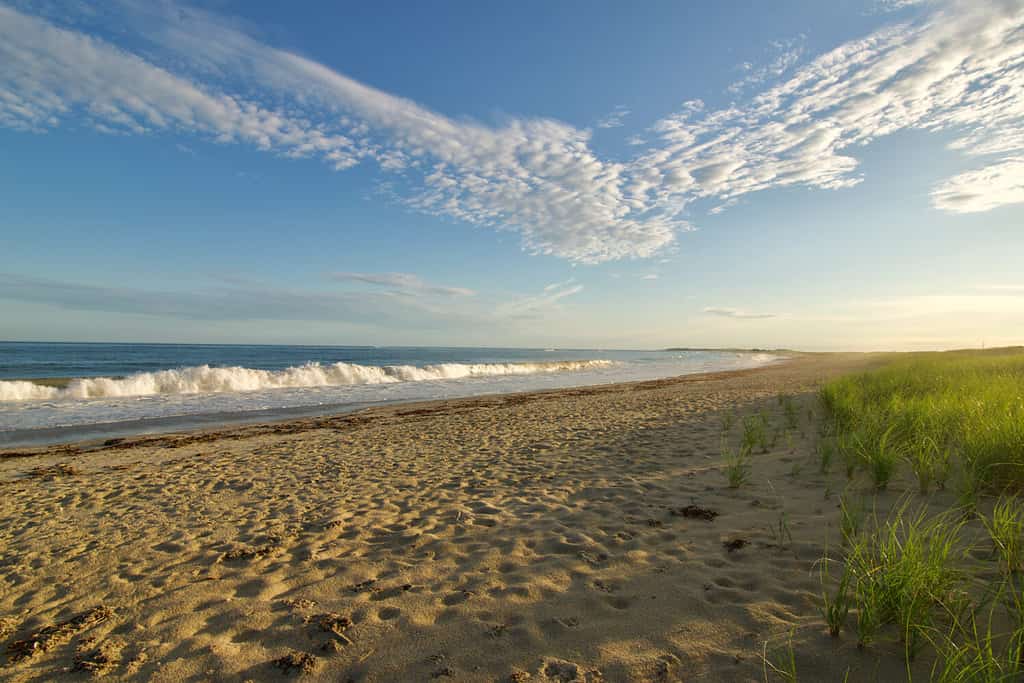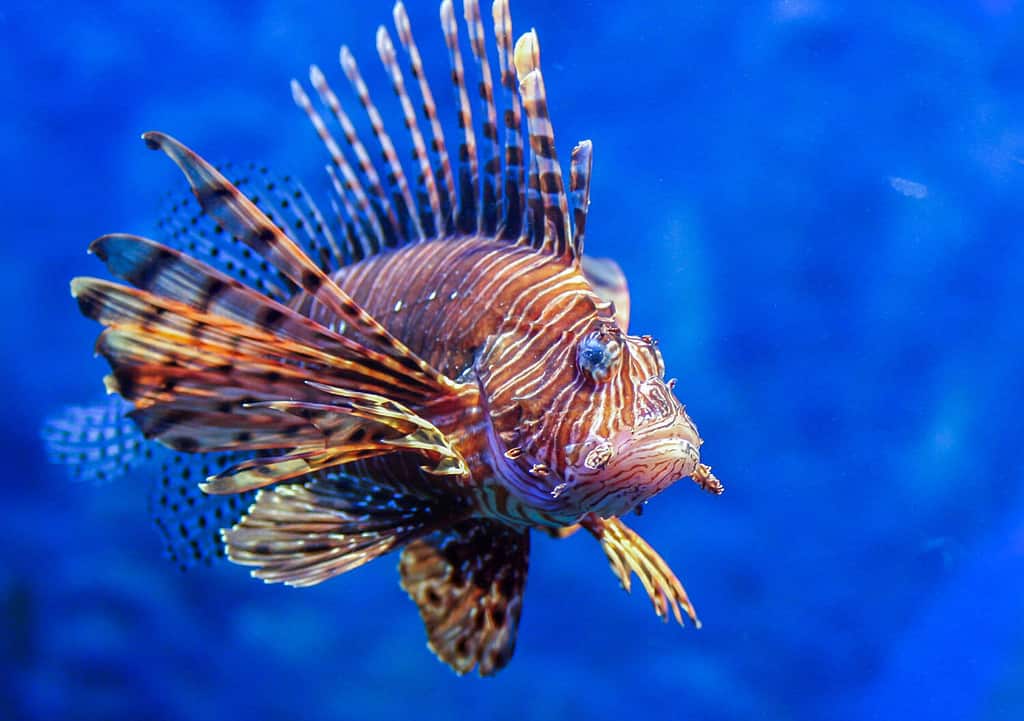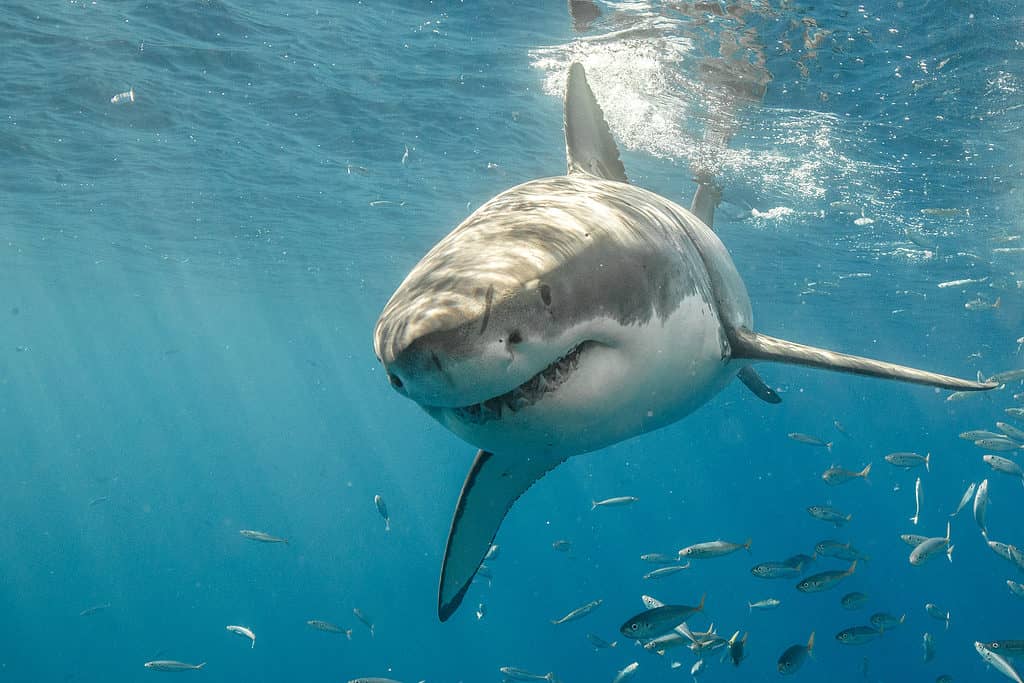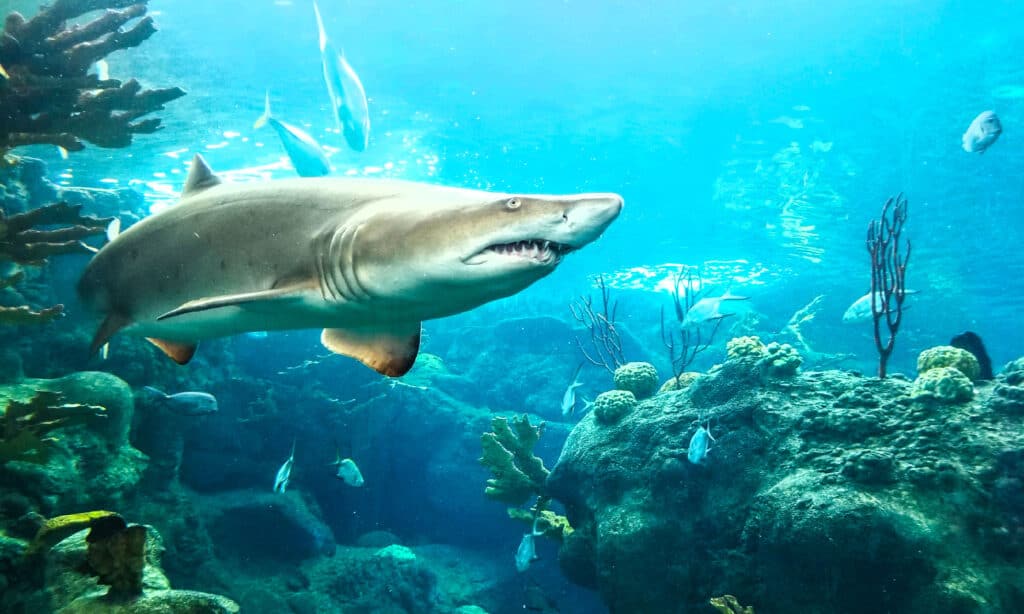Summer is one of the best times to take a dip in Rhode Island‘s many beaches, however, some animals in the water can cause you harm. So, is it safe to swim in Rhode Island’s ocean? What animals live in the water? Follow along to discover the four most dangerous animals lurking in Rhode Island’s ocean.
Is It Dangerous to Swim in Rhode Island’s Ocean?
While we are going to discuss some dangerous animals in Rhode Island’s ocean, there are other more dangerous risks. For example, rip currents can be deadly. Before deciding to swim on a Rhode Island beach, always look at the weather report and the flags hung up at the beach. Typically, a red flag signifies high hazard because of strong currents or high surf. Rip currents can pull you under quickly. If you’re pulled into a rip current, don’t fight it! You’ll only lose strength in your muscles. Instead, swim at an angle. If it’s too powerful, take a breath and let yourself float. While floating yell and flail your arms as loudly as possible.
You’re more likely to drown than get attacked by a sea animal. Still, while the animals on our list aren’t purposefully aggressive, it’s best to stay clear of them! Never bother a wild animal in the water, no matter how docile they seem. It’s important to know that once you step into the ocean, you’re n their territory and home.

Rip currents are very dangerous. If you’re pulled into a rip current, remain calm and don’t fight against the current.
©A.Valentino/Shutterstock.com
Dangerous Animals Lurking in Rhode Island’s Ocean
Listed below we have five of the most dangerous animals in Rhode Island’s Ocean. Although these animals are dangerous, attacks and encounters are rare.
Clinging Jellyfish
Clinging jellyfish in Rhode Island aren’t extremely common, but they pack a powerful and painful sting. In 2022, these tiny, but mighty jellyfish were found in coastal ponds.
Clinging jellyfish are small jellyfish that only grow up to an inch long. They are nearly completely transparent, making them difficult to see. Clinging jellyfish also have as many as 100 tentacles. Experts debate the native range of this jellyfish species, but they are considered an invasive species in Portugal, Sweden, California, and Argentina.
While clinging jellyfish stings are rarely fatal, they are extremely painful. Their sting can cause muscle cramps, tingling, and a swollen throat. However, some clinging jellyfish stings don’t cause pain or discomfort. Either way, you won’t want to get stung by one. Clinging jellyfish mainly live in eelgrass beds and seaweeds.

Clinging jellyfish are only about an inch long.
©Clinging Jellyfish/Shutterstock.com
Lionfish
The next animal on our list of dangerous animals lurking in Rhode Island’s ocean is the lionfish. These fish aren’t extremely common in Rhode Island, but you don’t want to accidentally touch one. Lionfish are highly invasive venomous fish. Scientists currently recognize twelve species. They are native to the Indo-Pacific.
Lionfish are easy to spot and identify. They are mainly red, white, yellow, and brown. Lionfish have venomous fin rays. They use their rays and coloration to defend themselves from predators. Typically, the sting from their venomous fin rays isn’t fatal. However, deaths have occurred mainly in children and the elderly. A sting can cause pain, sweating, fever, diarrhea, nausea, and possible temporary paralysis of the limbs.

Lionfish are venomous and very invasive.
©dimakig/Shutterstock.com
Great White Sharks
Shark attacks are extremely rare in Rhode Island. There have only ever been two confirmed shark attacks in Rhode Island’s ocean since 1837. While attacks are rare, there is always a risk. A frequent shark visitor is the great white shark. This dangerous shark isn’t very aggressive. In Rhode Island, they are most common in winter, when people are rarely n the water.
Great white sharks are one of the largest shark species in the world. They can grow up to 20 feet long. They are born already measuring 4 feet long. Great whites have a bite force of up to 4,000 psi. This large shark species generally attack because of confusion or mistaken identity. They are attracted to splashing in the water.

Great white sharks have a bite force of up to 4,000 psi.
©iStock.com/ShaneMyersPhoto
Tiger Sharks
Like great whites, tiger sharks are dangerous animals in Rhode Island’s ocean. Tiger sharks are large ground sharks living in tropical and sub-tropical waters throughout the world. They are typically about 18 feet long and weigh 2,000 pounds. Tiger sharks are known for being aggressive. They are curious animals that swim closer to loud noises and splashing. Interestingly, even though they are a similar size to the great white, tiger sharks have a bite force of 6,000 pounds per square centimeter. To lower your risk of a shark attack, don’t swim in the ocean at night and stay away from splashing birds and fish.

Tiger sharks are about 18 feet long.
©iStock.com/Sean Craft
The photo featured at the top of this post is © Laura Stone/Shutterstock.com
Thank you for reading! Have some feedback for us? Contact the AZ Animals editorial team.







